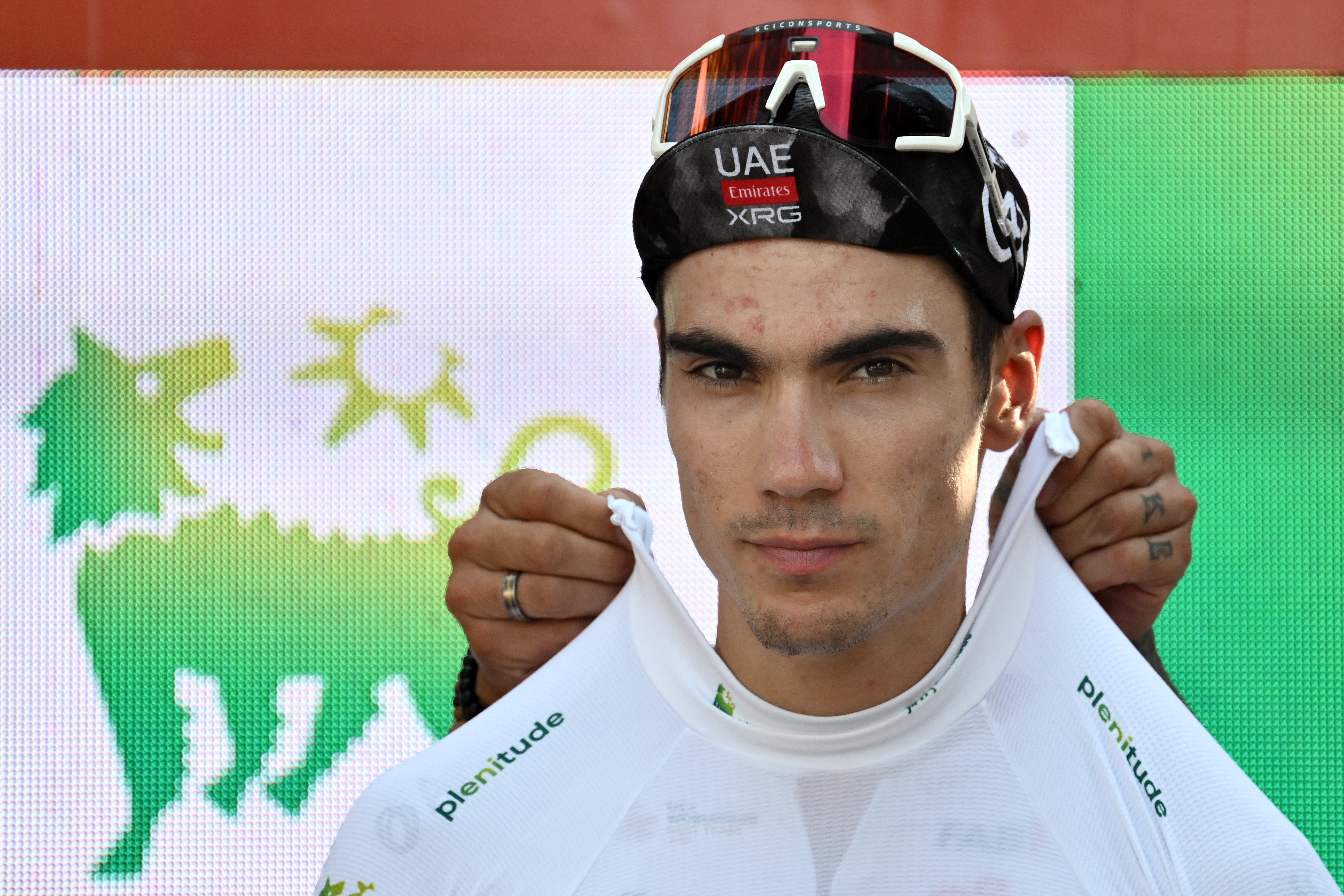Spring Classics: 2016 guide
Everything you need to know about cycling's iconic one-day races
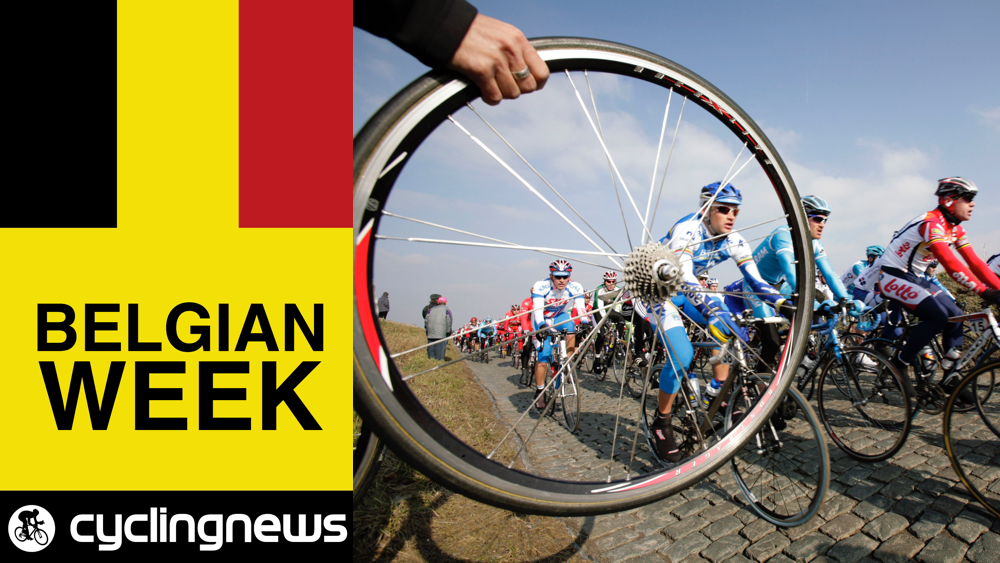
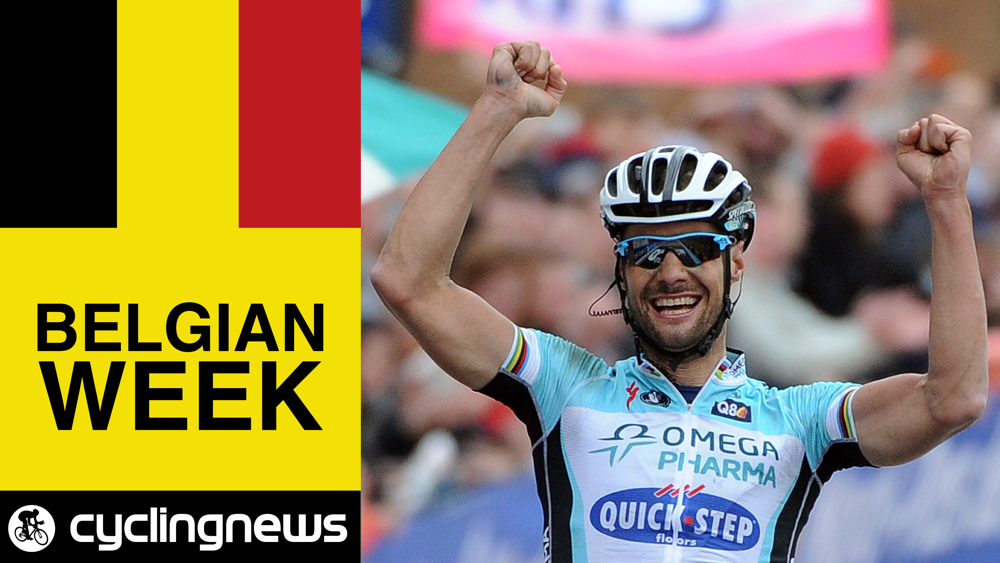
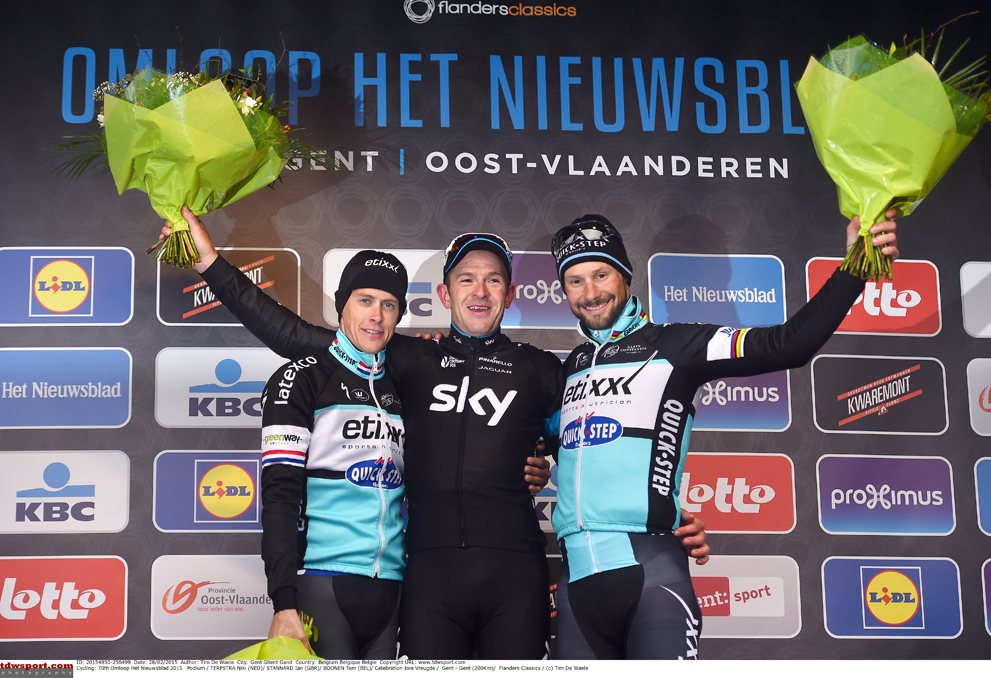
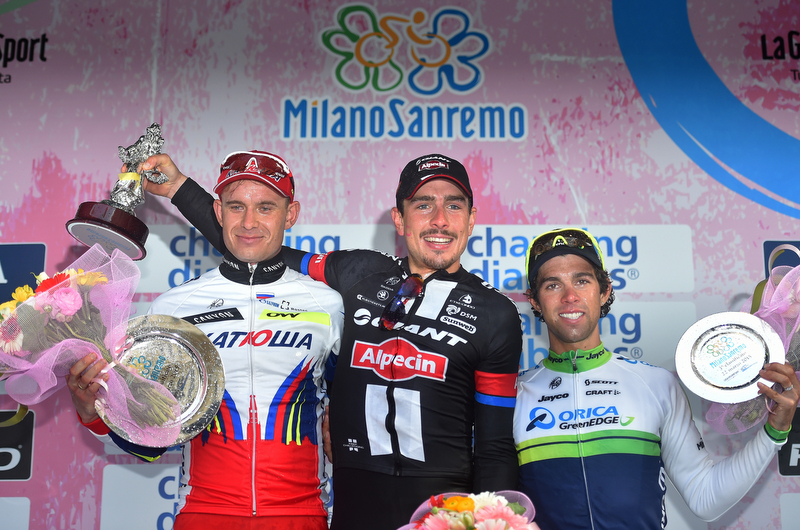
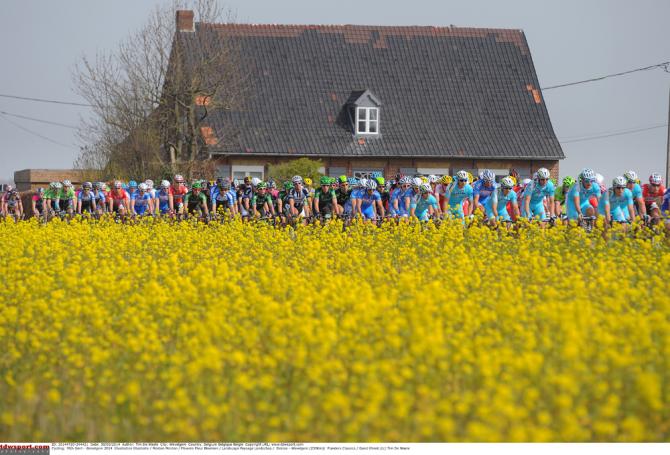
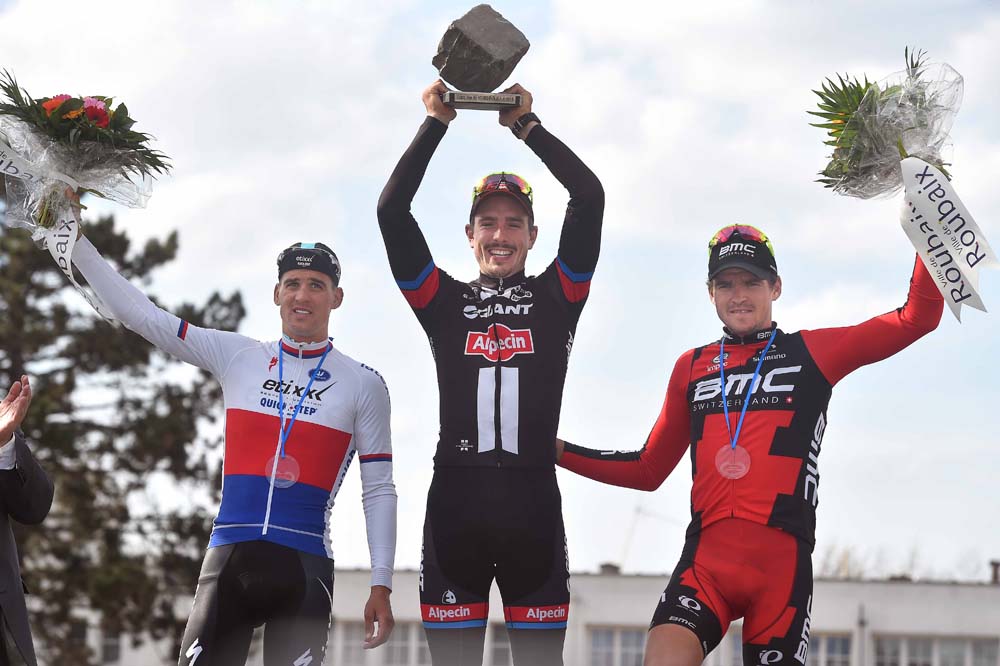
The Spring Classics are a unique collection of deeply entrenched and historic one-day races that span Northern Europe and that cut right to the core of what makes cycling such a remarkably special sport. From the cobbles of Paris-Roubaix to the punchy bergs of the Tour of Flanders, they are a part of cycling’s tradition and provide some of the most exciting and memorable moments in the sport's history.
This weekend sees the start of the Spring campaign with Omloop Het Nieuwsblad and Kuurne-Brussel-Kuurne raising the curtain with what is traditionally known as the ‘Opening weekend’. Cyclingnews will have complete live coverage from both races.
In March the Spring Classics return with the first Monument of the season, Milan-San Remo, and from there the races come thick and fast with Gent-Wevelgem, the Tour of Flanders, Paris-Roubaix and the Ardennes Classics – Amstel Gold Race, La Flèche Wallonne and Liège-Bastogne-Liège.
Omloop Het Nieuwsblad - February 27, Belgium
Cycling has become a year-round affair with expansion into the Middle East and Australia, but for many die-hard fans the true opening moment of the season comes when the peloton touches down in Belgium for the first major race of the season.
Previously known as Het Volk, Omloop Het Nieuwsblad, kicks off the 'opening weekend' with Kuurne-Brussel-Kuurne taking place the following day.
Omloop Het Nieuwsblad covers 200 kilometres of racing and features 11 climbs along the route. The race can often be effected by the weather with driving rain, wind and even snow featuring in the past.
Defending champion Ian Stannard (Team Sky) will not return to the race this year but the challengers lining up in Gent for the start include Tom Boonen (Etixx-QuickStep), Greg Van Avermaet (BMC Racing), youngster Tiesj Benoot (Lotto Soudal) and world champion Peter Sagan (Tinkoff).
The latest race content, interviews, features, reviews and expert buying guides, direct to your inbox!
What happened in 2016?
Greg Van Avermaet finally won a Spring Classic after years of finishing on the podium, out sprinting world champion Peter Sagan (Tinkoff) from a four-man group after 200km of racing. The BMC rider launched his sprint first, holding off Sagan to celebrate his first win of the season. To read the full race report, click here
2016 Omloop Het Nieuwsblad video highlights
Omloop Het Nieuwsblad 2015 | Omloop Het Nieuwsblad 2014 | Omloop Het Nieuwsblad 2013 | Race history
Kuurne-Brussel-Kuurne - February 28, Belgium
The 'opening weekend' continues with Kuurne-Brussel-Kuurne taking place a day after Omloop Het Nieuwsblad. The second event typically tends to favour the sprinters with Mark Cavendish a winner on two occasions in the last few years.
Starting in Kuurne, the race heads east, deep into Flanders country with 11 climbs on the menu, including the Oude Kwaremont, Holstraat and the final ascent – which comes roughly 50 kilometres before the line – the Nokereberg.
Many of the riders who raced Omloop Het Nieuwsblad will turn up for Kuurne-Brussel-Kuurne with Alexander Kristoff (Katusha), Peter Sagan (Tinkoff) and Elia Viviani (Team Sky) among the key race contenders.
Like Ian Stannard in Omloop Het Nieuwsblad, Mark Cavendish will skip the defence of his Kuurne-Brussel-Kuurne crown, the Dimension Data rider instead preparing for the UCI Track World Championships.
What happened in 2016?
A Fabian Cancellara impersonation from Jasper Stuyven (Trek-Segafredo) was picture perfect as the young Belgian soloed to Kuurne-Brussel-Kuurne victory following a blistering late attack. Stuyven spoke post-race of not having the "guts to fight on the Taaienberg" the day before at Omloop Het Nieuwsblad but there was redemption Sunday for the 23-year-old. "Indirectly I thought about it today, that it was a nice revenge to pay tribute to him. My grandfather was a super fan of mine. He would’ve been extremely proud," Stuyven said of the memory of his grandfather to whom he paid tribute with his victory salute, pointing to the heavens.
For the second year running, Katusha's Alexander Kristoff took out second place with Nacer Bouhanni (Cofidis) in third. To read our race report from 2015, click here.
Kuurne-Brussel-Kuurne video highlights
Kuurne-Brussel-Kuurne 2015 | Kuurne-Brussel-Kuurne 2014 | Kuurne-Brussel-Kuurne 2013 | Race history
Milan-San Remo - March 19, Italy
The first monument of the season is also the longest of the five with the total distance of Milan-San Remo often stretching out over 300km as the neutralised zone takes the peloton out of Milan's inner city. If the distance so early in the season hasn't been an issue for the riders, in recent years there has been snow, sleet and rain as the weather conditions have ensured La Classicissima remains one of the hardest one-day races on the calendar.
Milan-San Remo traditionally starts in the Piazza del Duomo with the first half of the race taking the peloton through Lombardy and Piedmont en route to the first climb of the day, the Passo del Turchino. From the climb, the peloton skirts the Ligurian Coast where the famous climbs of Capo Mele, Capo Cervo and Capo Berta, the Cipressa and the all important Poggio await before the Via Roma finale in San Remo.
Defending champion John Degenkolb is out of the race as he continues to recover from injuries sustained when he and his Giant-Alpecin teammates were hit by a car while training in Spain late-last month. While the German will be missed in 2016, there is no shortage of potential winners with Fabian Cancellara (Trek-Segafredo) aiming for a second title on his last appearance, and World Champion Peter Sagan (Tinkoff) building for his best spring campaign yet. Michael Matthews (Orica-GreenEdge) has improved a year on from his second place and 2014 champion Alexander Kristoff (Katusha) has demonstrated he is in form with five wins in Qatar and Oman.
Cyclingnews will have complete live coverage of the race starting at 09:00 am CET on March 19.
What happened in 2016?
Arnaud Demare (FDJ) ended France's drought in the monuments with a well timed sprint on the Via Rome having earlier crashed on the Cipressa and chased back on. A late crash by Fernando Gaviria caused chaos but amazingly it was only the Etixx-Quick Step rider who fell but in doing so, disrupted the chances of Peter Sagan and Fabian Cancellara.
Raced under blue skies, a landslide saw a brief detour for the peloton with a crash that involved pre-race favourite Michael Matthews (Orica-GreenEdge), Geraint Thomas (Team Sky) and Demare among others providing drama to an otherwise tranquil affair. While Matthews struggled to chase back on with bleeding limbs, Demare was paced back into the peloton by his teammates.
Attacks from Michal Kwiatkowski Vincenzo Nibali lit up the race off the Poggio before Edvald Boasson Hagen (Dimension Data) and Greg Van Avermaet both tired to take a flyer with one kilometre remaining but it would come back for a sprint finish. As Gaviria and disrupted the sprint, Jurgen Roelandts lead out with Nacer Bouhanni challenging before he jumped a chain just as Demare passed for the win with Team Sky's Ben Swift surging late for second place.
Post race the analysis revolved around the alleged tow Demare took post-crash which the Frenchman vehemently refuted. To read our race report from 2016, click here.
Milan-San Remo video highlights
Milan-San Remo 2015 | Milan-San Remo 2014 | Milan-San Remo 2013 | Race history
Gent - Wevelgem - March 27, Belgium
Following the the 'opening weekend', where riders and teams have lost or won and learned a few important lessons before the 'big' races of the Classics, Gent-Wevelgem favours the sprinters but is one for the strong men of the bunch.
The 2015 edition of the race was regarded as one of the greatest days of racing in the season as wind wrecked havoc, throwing riders from their bikes onto the ground and into canals. Such was the ferocity of the winds, former winner Edvald Boason Hagen was blown from his bike into a bollard, breaking his collarbone and seeing his classics campaign come to a premature end.
The Kemmelberg, positioned some 30km from the finish, is always a key feature of the parcours, and this year the second ascent will go up the hill's steeper side in a move organisers hope will make the race more of an 'open book'.
What happened in 2016?
Peter Sagan won his first race in the rainbow stripes as he outsprinted a small group of Sep Vanmarcke (LottoNL-Jumbo), Viacheslav Kuznetsov (Katusha) and Fabian Cancellara (Trek-Segafredo). The cobbled Kemmelberg proved to be the crucial point of the race as Cancellara, Sagan and Vanmarcke powered away from a reduced peloton to quickly catch Kuznetsov who had preempted the moved by getting up the road.
With 20km to the finish line and a group containing several sprinters, it was touch and go whether the quartet would stay away. With cooperation at the front, the peloton knew the chase was over and the mind games started in the quartet. Kuznetsov was the first rider to jump with 200 metres to go and while Cancellara struggled with cramps, Sagan followed then passed the Katusha man with Vanmarcke nipping in for second. To read our race report from 2015, click here.
Gent - Wevelgem video highlights
Gent - Wevelgem 2015 | Gent - Wevelgem 2014 | Gent - Wevelgem 2013 | Race history
Tour of Flanders - April 3, Belgium
The second monument of the season, the Tour of Flanders holds a special place in the hearts of the Flemish but the second monument of the season isn't solely reserved for the Belgians. First held in 1913, the 2016 edition of the race is a special occasion with De Ronde turning 100.
Six riders have won three editions of Flanders and two of those are lining up for what is likely to be the final time in their careers. Fabian Cancellara, a winner in 2010, 2013 and 2014, missed the 2015 edition of the race due to fractured vertebrae but has become an honorary Belgian due to his feats. Tom Boonen, though, is a superstar in home country and is expected to win on each occasion he lines up in the Bruges market square to start the race.
The gruelling route takes in some of Flanders' most iconic short cobbled climbs, which, packed into the latter half of the race, ensure that only the strongest - and those who make and respond to the right moves - emerge at the finish with a shot at victory.
What happened in 2016?
Having broken his duck at Gent-Wevelgem, Peter Sagan put in an impressive solo performance at the Tour of Flanders to win his first monument. The Tinkoff rider rode away from Sep Vanmarcke on the final ascent of the Paterberg and then held off the chasing duo of Fabian Cancellara and Vanmarcke to soak in the occasions of winning the 100th De Ronde.
A fast start to the race ensured 70km were covered before the breakaway went away as the peloton then started to splinter on the way to the finishing circuits with the iconic hellingen of Flanders but not before Greg Van Avermaet and his BMC teammates hit the deck, ending the race for one of the favourites. While Van Avermaet was on his way to the hospital, the favourites were starting to make their moves with the race clicking over the 200km mark.
An attack from Michal Kwiatkowski was followed by Sagan with only Sep Vanmarcke sending the danger of the move as Fabian Cancellara set two-time winner Stijn Devolder the task of bring the trio back. The trio linked up the various riders who made their way up the road or were the remnants from the break but once on the Paterberg it was Sagan and Vanmarcke with Cancellara powering his way forward in vain as the world champion surged to victory. To read our race report from 2015, click here.
Tour of Flanders video highlights
Tour of Flanders 2015 | Tour of Flanders 2014 | Tour of Flanders 2013 | Race history
Paris-Roubaix - April 10, France
Paris-Roubaix, 'queen of the classics', is an anachronism in many aspects, sending riders over cobbled roads that only open for one day of the year, and finishing in the Roubaix velodrome. Paris-Roubaix is loved and lauded and hated and despised with equal measures by the riders who have taken part in the race. Theo de Rooij famously described Paris-Roubaix as, "It's a bollocks, this race!" before replying, when asked if he would take part again, "Sure, it's the most beautiful race in the world!"
The cobbled sectors of Paris-Roubaix make the race with names such as Trouée d'Arenberg, Mons-en-Pévèle and Carrefour de l'Arbre just three examples that keep riders up at night. Varying in length and difficulty, the cobbled sectors initially were used out of necessity - there were no other roads the race could use. With the advent of live television coverage of the race, there were fears that the cobbled roads would reflect badly on Northern France with suggestions the local councils couldn't afford new roads. Thankfully the cobbles remain, there is even 'a friends of the cobbles society - Les Amis de Paris Roubaix - who now look after the sectors and ensure they remain instrinsic features of Paris-Roubaix
Where the Tour of Flanders is often a test of the strongest rider in the race, Paris-Roubaix can be a lottery by comparison with mechanicals ending the hopes of hundreds of the cyclists over the years. The unpredictability is also a further drawcard for spectators who line the roadside for the final cobbled classic of the spring.
What happened in 2015?
Pre-Paris-Roubaix, the focus of the British press revolved around one man, Bradley Wiggins, who would be hanging up his Team Sky wheels at the conclusion of the race. With Fabian Cancellara and Tom Boonen both absent, the likelihood of a new winner was far higher than almost any other in the preceding ten years.
A late move initiated by Greg Van Avermaet (BMC Racing) and Yves Lampaert (Etixx-QuickStep) was covered by Giant-Alpecin's Bert De Backer, working for John Degenkolb, before Zdenek Stybar (Etixx-Quick-Step), Greg Van Avermaet (BMC Racing Team), Lars Boom (Astana Pro Team), Martin Elmiger (IAM Cycling) and Jens Keukeleire (Orica GreenEdge) bridged across.
Pre-race favourites Peter Sagan and Alexander Kristoff, Wiggins, and defending champion Terpstra found themselves out of contention as the front group rode into the velodrome. Once the nine-rider front group arrived on the boards, it was a foregone conclusion that Degenkolb, the fastest sprinter from the bunch, would be claiming a second Monument of the spring and just the second ever Roubaix victory for Germany. To read our race report, click here.
Paris-Roubaix video highlights
Paris-Roubaix 2015 | Paris-Roubaix 2014 | Paris-Roubaix 2013 | Race history
Amstel Gold Race – April 17, Holland
Amstel Gold Race has a character all of its own with twisty and narrow roads, short and steep climbs, and Dutch, orange-clad fans. The first of three Ardennes Classics, Amstel Gold Race is a race to watch and one for the riders to add to their palmarès.
The relatively new Classic - it was first run in 1966 - starts in Maastricht and ends with three circuits on the Cauberg. The first two times up the 1.5-kilometre climb typically splits the race into select groups, while the final ascent decides the race winner. In recent years the finish has moved just beyond the summit of the Cauberg, adding a new dynamic to the race with riders having to alter their acceleration to the line.
Jan Raas holds the title for the most number of wins with five, while Philippe Gilbert has three to his name (2010, 2011, 2014).
What happened in 2015?
Last year former world champion Michal Kwiatkowski (Etixx-QuickStep) claimed the Amstel Gold Race with a powerful sprint finish after the steep slopes of the Cauberg were not enough to separate the pre-race favourites. He won the race ahead of Alejandro Valverde (Movistar) and Michael Matthews (Orica-GreenEdge).
Philippe Gilbert (BMC) and Matthews had distanced themselves from the peloton on the Cauberg, but, Kwiatkowski and other race favourites worked their way back into the fold on the 1.8km stretch to the finish line.
Matthews and Greg Van Avermaet (BMC) started their sprints early, allowing Kwiatkowski the time he needed to wind up his sprint and push through to the finish line, winning the race by a bike length over Valverde and Matthews. To read our race report, click here.
Amstel Gold Race video higlights
Amstel Gold Race 2015 | Amstel Gold Race 2014 | Amstel Gold Race 2013
La Flèche Wallonne - April 20, Belgium
La Flèche Wallonne 2015 | La Flèche Wallonne 2014 | La Flèche Wallonne 2013
Liège-Bastogne-Liège - April 24, Belgium
Liège-Bastogne-Liège is the final Ardennes race and the final Spring Classic of the season. Also known as La Doyenne and dating back to 1892 the race packs numerous côtes on the out-and-back run from the suburb of Ans, just south of Liège.
On the return journey to Ans, the favourites will start to move forward in the pack. One of the toughest battles will be waged on the 2.1-kilometre La Redoute. The climb will be an indicator of how the race will continue to unfold over the three following côtes of Sprimont (-29km), Roche aux Faucons (-19.5km) and Saint-Nicolas (-5.5km).
The finish to Ans is not considered one of the official climbs, but it rises steadily over the final two kilometres. The race is the fourth of cycling's five Monuments. The fifth Monument, Il Lombardia, comes almost six months later.
The race has been won by some all-time greats of the sport, with Bernard Hinault’s victory in 1980, when it snowed throughout, standing out. Liège-Bastogne-Liège is a thorough test of stamina and tactical prowess, and victory here is a highlight of any cyclist’s career.
What happened in 2015?
In 2015 Alejandro Valverde (Movistar) carried his wining form from La Flèche Wallonne into Liège-Bastogne-Liège to claim his third win in the final Monument of the spring. The Spanish rider edged out Julian Alaphillipe (Etixx-QuickStep) and Joaquim Rodríguez (Katusha). To read our race report, click here.
Liège-Bastogne-Liège video highlights
Liège-Bastogne-Liège 2015 | Liège-Bastogne-Liège 2014 | Liège-Bastogne-Liège 2013

